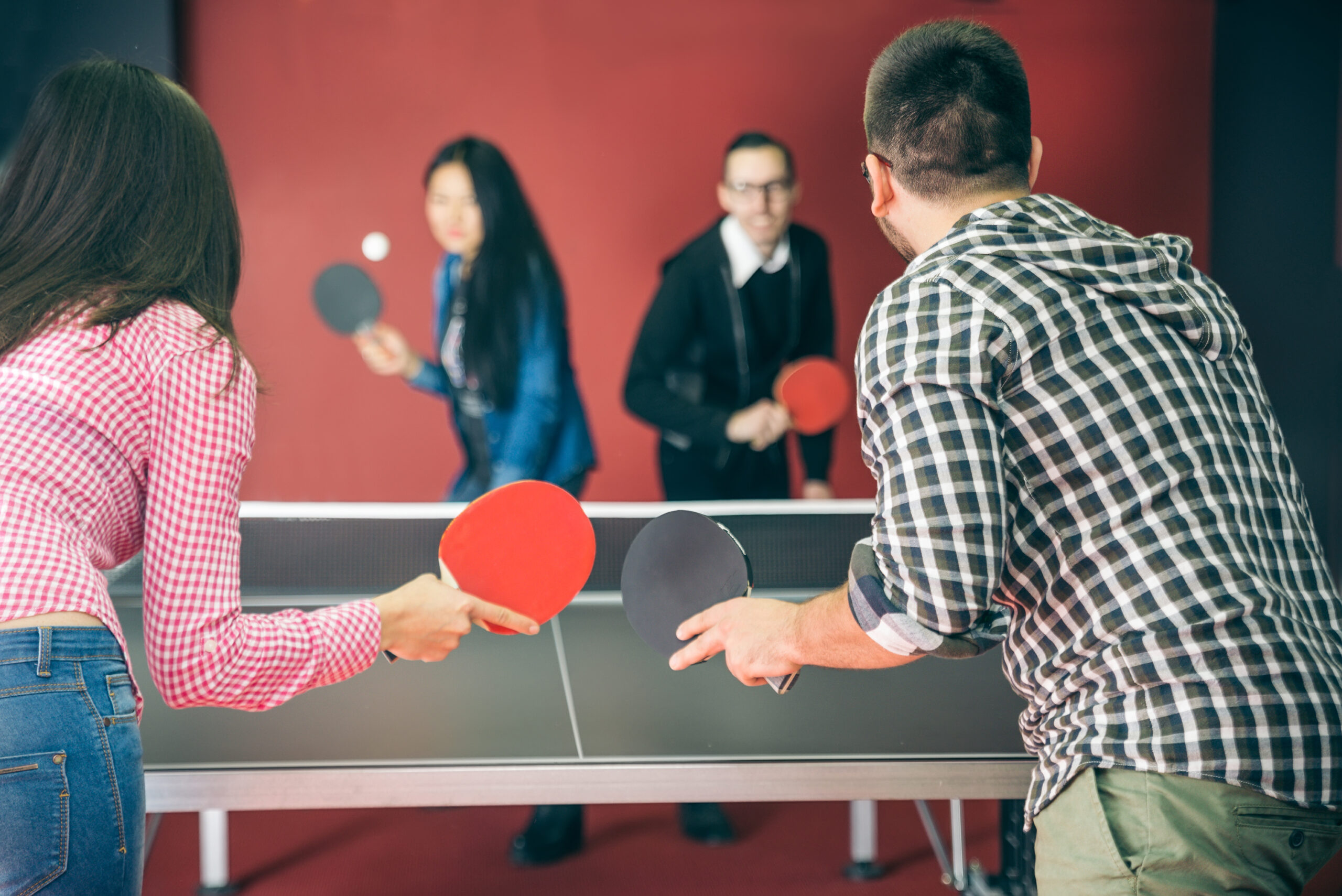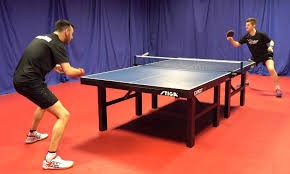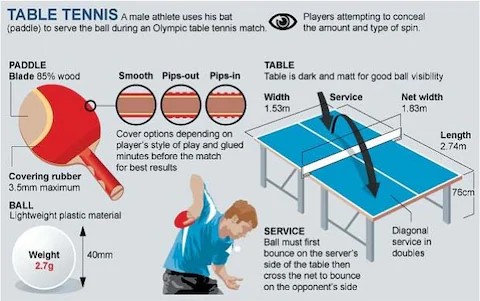Welcome to the dynamic world of ping pong, a sport that combines lightning-fast reflexes, strategic finesse, and a touch of finesse.
Whether you're a novice paddler or a seasoned player looking to refine your skills, this article is your gateway to unlocking the secrets of ping pong mastery. We'll traverse the spectrum from fundamental techniques to advanced strategies, equipping you with the knowledge to elevate your game and leave opponents in awe.
So, what sets apart a true ping pong maestro? It's not just the swift exchanges over the net or the precisely angled shots; it's a mastery of techniques, an understanding of game dynamics, and the ability to strategize effectively.
Join us as we delve into the intricacies of this captivating sport, providing insights that will undoubtedly transform your ping pong prowess.
In this article, we'll delve into essential tips for players ranging from beginners to advanced, unraveling strategies, clarifying rules, and providing insights into how to play ping pong like a pro. Let's embark on a journey to refine your skills and deepen your appreciation for the nuances of this captivating sport.
Top Tips on Ping Pong: Elevating Your Game

Contents
Mastering the Basics: Tips on Ping Pong for Beginners
Embarking on the journey of table tennis is an exciting endeavor, especially for beginners eager to grasp the fundamentals of the sport. To set the stage for an enjoyable and progressive learning experience, it’s essential to master the basics. In this section, we’ll explore invaluable tips tailored specifically for those new to ping pong.
Whether you’re picking up a paddle for the first time or looking to refine your skills, these beginner-friendly tips will pave the way for a solid understanding of the game’s essentials. Let’s dive into the world of ping pong, where each tip serves as a building block for your evolving expertise on the table.
Grip and Stance: The Foundation of Control

The way you hold your racket and your positioning is one of the first deciding factors on what sets a table tennis player apart from anybody else. For beginners, establishing the right grip and stance is fundamental to gaining control over the game. The shakehand grip is commonly recommended, where the paddle is held like shaking hands with it.
Your stance should be balanced, with knees slightly bent, allowing for quick movements. This foundation provides stability and sets the stage for learning essential strokes.
Understanding Spin: Navigating the Ball’s Movement
Learning to recognize and generate spin is crucial in ping pong. Beginners should focus on understanding the difference between topspin, backspin, and sidespin. Practice basic strokes with various spins to develop the ability to predict the ball’s trajectory. This knowledge becomes a cornerstone for effective shot placement and strategic play.
Basic Serve Techniques: Initiating the Rally
Initiating a rally with a solid serve is key. Beginners should practice simple, controlled serves to start, gradually incorporating spin variations. The backspin serve, topspin serve, and sidespin serves are essential techniques to grasp, all of which are good ways how to practice ping pong alone.
Mastering the art of serving not only starts the point but also puts you in control from the beginning.
Footwork Essentials: Seamless Movement on the Table
Efficient footwork is often underestimated by beginners, which is considered one of the most crucial table tennis basic skills to learn at all levels. Learning to move quickly and position yourself effectively enhances your game.
Focus on small, quick steps to navigate the table swiftly. A combination of good footwork and anticipation allows you to reach the ball in time, improving your overall performance.
Mastering the Forehand and Backhand: Essential Strokes
Finally, beginners should dedicate time to mastering the basic forehand and backhand strokes. Start with the correct paddle angle and build muscle memory for consistent strokes. Developing a reliable forehand and backhand lays the groundwork for more advanced techniques as you progress in your ping pong journey.
Advancing Skills: Tips on Ping Pong for Intermediate Players
As an intermediate player, you’ve likely grasped the fundamentals and are hungry for improvement. This stage is all about refining your techniques, enhancing consistency, and exploring strategic nuances.
Let’s delve into specific tips to help intermediate players elevate their ping pong game.
Advanced Serve Strategies: Adding Depth to Your Game

At the intermediate level, serving becomes more than just initiation; it becomes a strategic tool and a potential entry to advanced table tennis gameplay strategy.
Experiment with advanced serve techniques like the pendulum serve, reverse pendulum serve, and the tomahawk serve. These variations introduce complexity and unpredictability, making it challenging for opponents to anticipate your next move.
Mastering Spin Variation: Adding Layers to Your Shots
Intermediate players should deepen their understanding and application of spin. Beyond the basics, focus on mastering the sidespin loop, backhand flick, and topspin drive. These techniques allow you to add layers of complexity to your shots, keeping your opponents on their toes.
Control over spin variation becomes a powerful asset in dictating the pace and direction of the game.
Effective Footwork Strategies: Covering More Ground
Refine your footwork to cover a larger area of the table effectively. Implement lateral movements, diagonal steps, and quick pivots. These advanced footwork strategies not only improve your defensive capabilities but also set the stage for more aggressive plays, enabling you to seize control of the rally.
Tactical Placement: Precision in Shot Selection
Intermediate players should start thinking several shots ahead, focusing on tactical placement. Work on placing shots strategically to exploit your opponent’s weaknesses and create opportunities for attack. Develop a range of shots, including wide angles, deep pushes, and drop shots, to keep your opponents guessing and off balance.
Building Mental Resilience: Staying Composed in Matches
As the game becomes more challenging, mental resilience becomes a crucial aspect of success. Develop the ability to stay composed under pressure, manage frustration, and maintain focus during intense rallies. Cultivate a positive mindset, emphasizing learning and improvement, to navigate the complexities of intermediate-level play.
Strategic Mastery: Tips on Ping Pong for Advanced Players
Welcome to the advanced realm of ping pong, where precision, strategy, and mental acuity play pivotal roles. As an advanced player, you are constantly seeking an edge over opponents and refining your game to the highest standards. Let’s explore key strategies and tips that can help advanced players elevate their performance.
Serve Deception: Unlocking the Power of Mind Games
In the advanced stage, your serve is not just a start but a psychological weapon. Work on developing deceptive serves that confound opponents. The no-spin serve followed by a heavy-spin serve or using disguised spin variations can set you up for dominating rallies.
Mastering serve deception keeps your adversaries guessing and grants you control from the first stroke.
Advanced Footwork Dynamics: Fluidity and Precision
Advanced players focus on perfecting footwork dynamics. Incorporate a blend of offensive and defensive footwork strategies seamlessly. Quick lateral movements, subtle shifts in stance, and precise positioning are paramount. The ability to transition effortlessly between strokes, covering the table with efficiency, adds a layer of unpredictability to your game.
Strategic Adaptation: Reading and Reacting to Opponents
At the advanced level, understanding your opponent’s playing style becomes crucial, especially if you want to know how to get better at ping pong on that level.
Learn to read their shots, anticipate patterns, and adapt your strategy mid-game. Develop a keen sense of when to play defensively and when to seize control with aggressive plays. The ability to adjust your game plan on the fly can be a game-changer in high-level competitions.
Tactical Shot Sequences: Crafting Winning Combinations
Advanced players craft intricate shot sequences to outmaneuver opponents. Practice combinations like the backhand topspin followed by a quick forehand drive or a well-placed push followed by a powerful loop. Developing a repertoire of tactical shot sequences enhances your offensive capabilities and keeps opponents guessing about your next move.
Mental Fortitude: Mastering the Psychological Game
In advanced play, mental fortitude is often the differentiating factor. Cultivate resilience, focus, and a champion’s mindset. Learn to bounce back from setbacks, stay composed during intense rallies, and maintain a strategic approach even under pressure. A strong mental game is the cornerstone of success at the advanced level.
Strategic Prowess: What Is the Best Strategy to Win in Table Tennis?
Now, we will go into the heart of strategic gameplay in table tennis, which is how to play ping pong like a pro. Crafting a winning strategy involves a deep understanding of the game, opponents, and your own strengths.
Let’s delve into the core elements of creating an effective strategy to secure victory on the table.
Understanding Opponents: The Foundation of a Winning Strategy
The best strategy on how to play ping pong effectively begins with a profound understanding of your opponents. Analyze their playing style, strengths, weaknesses, and preferred shot selections. By comprehending your adversaries, you can tailor your strategy to exploit vulnerabilities and capitalize on opportunities during crucial moments.
Adaptability: The Key to Dynamic Strategies
Table tennis is a dynamic sport where adaptability is paramount. A successful strategy is not rigid but fluid, capable of adapting to the ebb and flow of the match. Be prepared to adjust your tactics based on the unfolding game, opponent’s adaptations, and the evolving circumstances on the table.
Strategic Shot Selection: Maximizing Effectiveness
Crafting a winning strategy involves selecting shots strategically. Focus on shots that exploit your opponent’s weaknesses while utilizing your strengths. Consider the placement, speed, and spin of your shots to keep opponents off balance. A well-thought-out shot selection can disrupt your adversary’s rhythm and set the stage for winning points.
Balancing Offense and Defense: The Winning Equation
A winning strategy strikes a delicate balance between offense and defense. While aggressive plays can secure quick points, a solid defensive foundation ensures resilience during opponents’ attacks. Understanding when to switch between offensive and defensive modes is crucial for a well-rounded and effective strategy.
Psychological Tactics: Mentally Disrupting Opponents
Beyond physical prowess, strategic mastery involves psychological tactics. Disrupt opponents’ concentration with varied pacing, unexpected changes in spin, and strategic use of timeouts. By introducing mental pressure, you can force errors and gain a psychological edge that complements your strategic gameplay.
Game Plan Adjustments: Real-Time Decision Making
The best strategy is not static; it evolves during the match. Be prepared to make real-time adjustments to your game plan. Analyze the effectiveness of your strategy, identify patterns in opponents’ gameplay, and make informed adjustments to stay ahead in the game.
Crafting a winning strategy in table tennis is an art that combines tactical acumen, adaptability, and mental resilience. Mastering these elements can elevate your gameplay to new heights and make you a formidable opponent on the table.
Frequently Asked Questions
What Are the Essential Tips for Beginners in Ping Pong?
For beginners, focusing on grip, stance, and basic strokes is crucial. Ensure you have the right paddle grip, maintain a balanced stance, and practice the fundamental forehand and backhand strokes. Keeping these things in mind is exactly how to play ping pong like a pro.
How Can Beginners Improve Their Consistency in Shots?
Consistency comes with practice. Start with simple drills, emphasizing control over speed. Focus on hitting the ball cleanly and gradually increase the intensity as your skills progress.
What Is Not Allowed in Ping Pong?
Don’t touch the table with your non-paddle hand during a ping pong match. Additionally, you’ll also want to make sure you don’t touch the ball with your non-paddle hand.
‘Volleys,’ or hitting the ball before it bounces on your side of the net, will result in a point for your opponent. So, you’ll want to avoid this as well.
Is Footwork Important in Ping Pong for Beginners?
Yes, footwork is vital. Practice moving to the right position for each shot. Good footwork enables better shot execution and positioning on the table.
What Is the Best Strategy for Beginners to Win in Table Tennis?
Prioritize ball placement and control. Aim for your opponent’s weaker areas, and work on consistent, accurate shots rather than aggressive plays. Building a strong foundation in control will contribute to long-term success.
Wrapping Up
Overall, mastering the basics of ping pong is a rewarding journey that requires dedication and practice. Whether you’re a beginner looking to refine your fundamental skills or an intermediate player seeking to enhance your strategy, these tips provide a comprehensive guide to elevate your game.
Remember, consistent practice, a focus on proper technique, and a strategic approach are key elements to becoming a proficient ping pong player.
As you progress in your ping pong journey, it’s essential to stay curious and open to learning. Table tennis is a dynamic sport, and the more you explore its nuances, the more you’ll discover about your own playing style.
